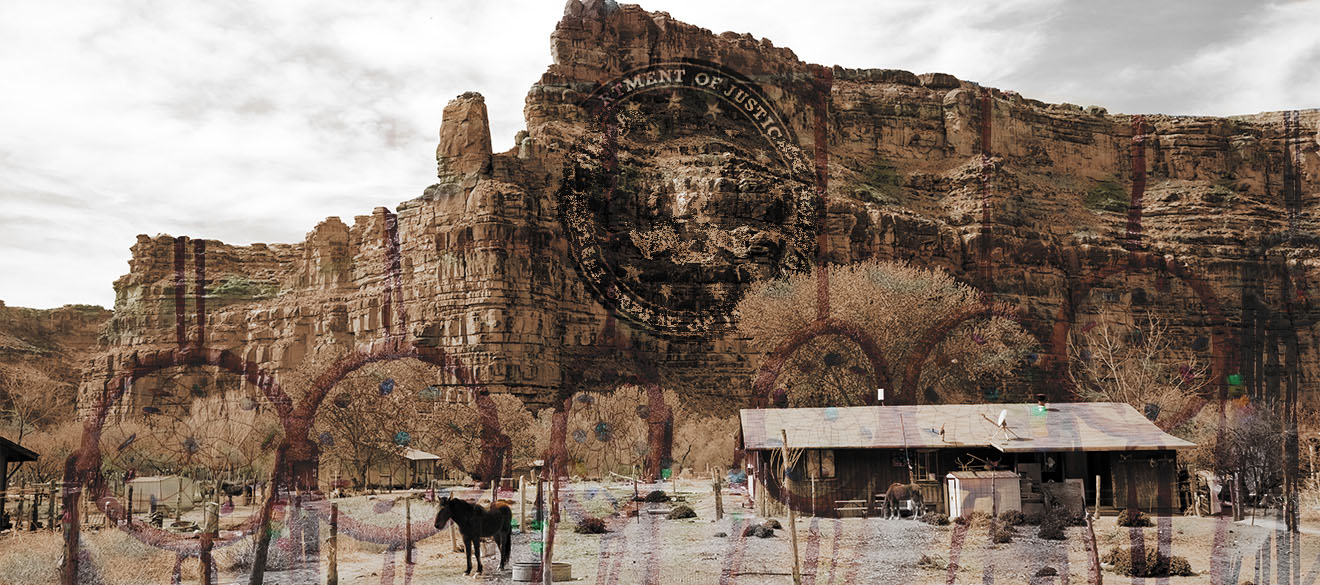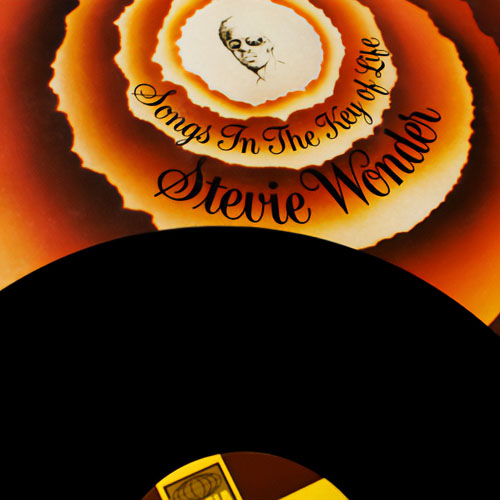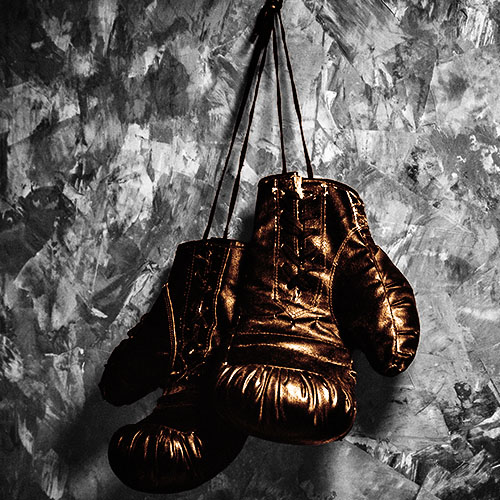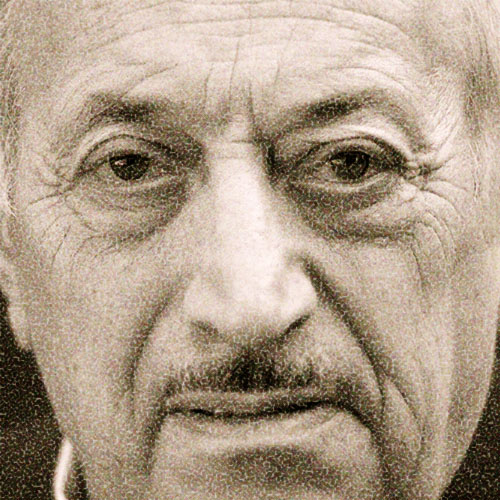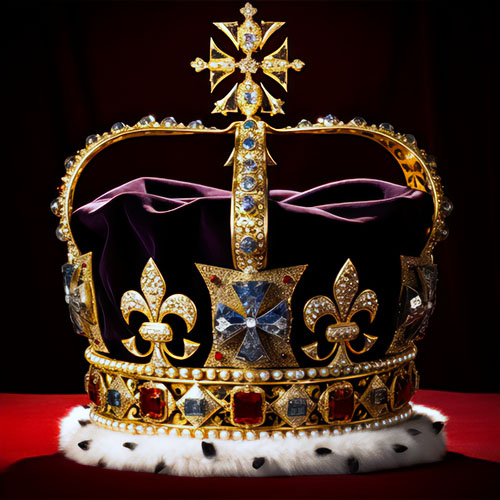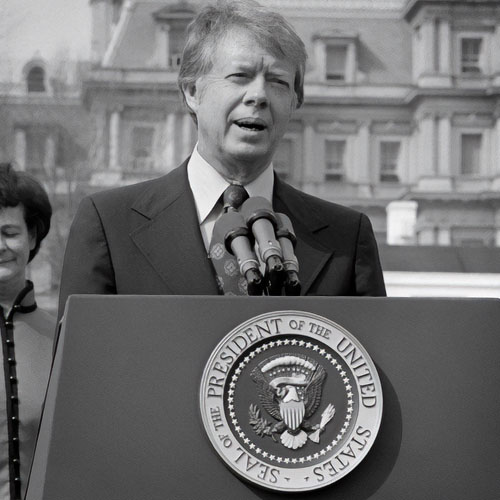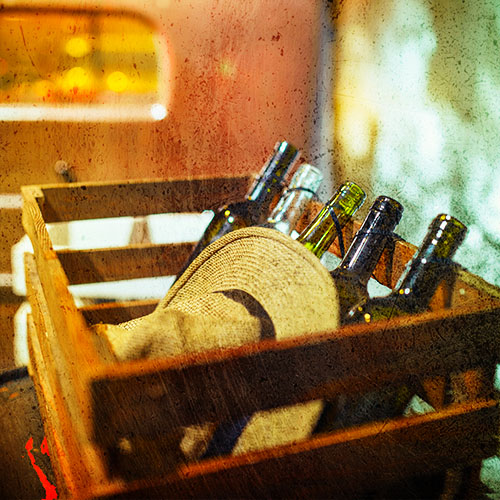Reservations Indeed — Penthouse Interview
When Russell Means first attracted attention, even fellow Indians scoffed. What kind of an anachronism was this man, wearing beads and moccasins, long black hair, and pomaded braids? Another faithful sidekick for the Lone Ranger? Tonto’s heir?
The answer was soon obvious. Means intended to battle the white man, not serve him. He began to demonstrate, picket, shout, and lobby on behalf of Indians. And soon government agencies were tapping his phones and proffering perjured testimony against him in court. They arrested and jailed him numerous times on charges ranging from arson to rioting. Though today Means is free, it is only as a parolee from a four-year jail sentence. He continues his war. “Those of us who have painted our faces,” he promises, “have taken a vow to die for what we believe in. We Indians have never been afraid to die, because we know where we’re going.”
Russell Means, cofounder of the American Indian Movement, has become a symbol of a revitalized people seeking freedom from a century of oppression. Throughout the 1970s, like a guerrilla theater, Means captured a national audience and alerted it to the plight — and the power — of the indigenous American. He orchestrated a prayer vigil on top of Mount Rushmore, claiming the monument was an insult to nature; he sued the Cleveland Indians baseball team, arguing that the team mascot, Chief Wahoo, demeaned the image of Indians; he led 1,300 other Indians into Gordon, Nebr., to protest the suspicious death of Raymond Yellow Thunder. Means and 77 other Indians were arrested in Custer, S.Dak., after rampaging through the town, incensed that a white man had received reduced charges for the stabbing death of Wesly Bad Heart Bull. In 1972 Means helped plan the Trail of Broken Treaties Caravan, an election-week march on Washington that ended with the takeover of the Bureau of Indian Affairs-which Means and his followers immediately renamed the Native American Embassy.
The most prolonged and dramatic battle of his career began on February 27, 1973, when Means and several hundred armed supporters seized a church and trading post in the village of Wounded Knee, S.Dak. It was there, 83 years earlier, that the American Indian Wars ended: the U.S. Seventh Cavalry slaughtered Chief Big Foot and some 350 members of his tribe, mostly women and children. There was no massacre in 1973. Under federal siege and on national television, Means and his followers held the town for 71 days, exchanging gunfire with the FBI and earning support from church and civil-rights groups — which airlifted supplies to the occupiers — across the country. “If the federal government once again turns a deaf ear and closes its eyes to the Indians,” said Means, “the Indian Wars will start all over again. There will be death. I don’t consider that a threat. That’s reality.”
Though maligned by many as a renegade, the leader of the Wounded Knee occupation was never far from harsh realities. Born into poverty on the Pine Ridge Reservation (South Dakota) on November 10, 1939, Russell Charles Means was the oldest son of Hank and Theodora Means. He grew up in a Vallejo, Calif., public housing project but remembers, from the few extended visits to Pine Ridge, that he was never far from his Sioux heritage. His grandfather warned him of the dangers of the white world. He and his brother Dale would watch in anger Indians being killed in the movies. They played cowboys and Indians with the white kids in Vallejo. “Sometimes we beat the hell out of them. I didn’t even know why. I guess they represented the cavalry to me. But we had them all wanting to be Indians.”
Young Means attended racially mixed schools, maintained good grades, and was an enthusiastic boy scout and a fine athlete. But at the age of 16 he transferred to the almost entirely white San Leandro High School. Taunted and barraged by racial slurs, he quickly learned that victimization of the American Indian was more than film fantasy or historical abstraction. He soon dropped out of school and began drifting. For the next ten years he worked at odd jobs across the country: picking tomatoes, teaching ballroom dancing, sorting mail, shoveling elephant manure at a circus. He became addicted to heroin, kicked the habit, then got hooked on alcohol.
By the late sixties he had wandered into a job at the Office of Economic Opportunity in Cleveland, was a husband and a father trying to emulate the white man’s ways. But it was then that he met fellow Indians Dennis Banks and Clyde Bellecourt and their nascent American Indian Movement. At first put off by the moccasins and belts and sashes and Indian jewelry that the group’s members wore, Means was soon convinced that AIM was serious business. At that point the Russell Means who had been attempting to become assimilated into white society transformed himself into a twentieth-century Indian renegade, fighting to dramatize his people’s plight.
Until Means and AIM appeared, American Indians were a forgotten people, the poorest of all ethnic minorities in the United States, shunted onto reservations in barely habitable regions of the country. The average yearly family income among the nearly 1 million population was $1,500. Unemployment varied from 40 to 80 percent. Life expectancy was 44 years, 20 years less than what it was for whites. Infant mortality among the Indian population was three times the national average; alcoholism and suicide were rampant.
With their prayer vigils and riots and marches and occupations, Means and AIM not only got their message through to the white man and his government; they also inspired other Indians in all parts of the country to assert themselves. Once-warring tribes organized themselves, elected regional leaders, and lobbied in cities, on reservations, and in Washington for rights they realized had been stripped away from them during a century of near colonial subjugation.
The Indians began to reclaim their right to lands that had been granted them in treaties with the U.S. government in the eighteenth and nineteenth centuries-but had since been appropriated by white men. In Alaska they were awarded nearly 1 billion dollars and 40 million acres of land with the Alaska Native Claims Settlement Act. By 1978 various tribes in six eastern states were suing for 12 million additional acres. Their leaders began demanding greater control of the Bureau of Indian Affairs, the federal agency that held 50 million acres of land on their behalf; an independent unit of federal lawyers to oversee legal matters; and more supervision in the disbursement of federal funds.
The courts became the new battleground. In some instances, the Indians demanded protection of sacred territories; in others, the right to benefit from the land’s riches. They soon realized the economic power that lay unexploited at their feet. In the West, Indian territory contained one-third of America’s strippable coal reserves, half the country’s uranium, and sizable amounts of oil. The 70 billion tons of coal alone were estimated to be worth a trillion dollars. The Indians sought advice from Arab oil experts and soon formed the Council of Energy Resource Tribes, which they hoped would become the “native American OPEC.”
Even though Russell Means has spawned and guided this resurgent Indian nationalism, today, radical as ever, he is worried that these latest efforts to exploit the land for material gain are a rape of nature and a violation of sacred Indian tradition. In 1979, for example, when the federal government was offering to buy the Black Hills, Means urged tribes to reject the offer: the land was “our graveyard, our church, the center of our universe, the birthplace of our people … everything we hold sacred and dear. And this is the reason it is not for sale.”
More than ever, Means is admonishing his fellow Indians not to forsake their heritage. He is contemptuous of those who do; he calls them “apples “ — red outside and white inside.
Last summer, at the Black Hill International Survival Gathering, Means warned “of coming to believe the white world now offers solutions to the problems it confronts us with … of allowing the words of native people to be twisted to the advantage of our enemies …. Feel sorry for them if you need to but be comfortable with who you are as American Indians.” After 40 battle-scarred years, Means is comfortable with who he is. “I am an Oglala Lakota patriot. That is all I want and all I need to be.”
What makes you most angry about white America?
Means: What pisses me off is the ignorance in this country: the ignorance of the deprivations that we Indians go through. You’re more concerned with boat people. You’ re more concerned with refugees from wherever. You’re more concerned with dissidents in Russia than you are with the genocide going on in your own backyard. And when you find out about it, it’s covered up. It’s covered up!
What is covered up?
Means: The FBI are the only ones who have federal jurisdiction on the reservation. They’re the enforcers, the gestapo. They make sure that anybody who gets out of line on the reservation is charged with a federal crime. What people don’t realize is that they bust in on old people, with dogs! Without warrants! They take people out of their homes and take them to jail. Without due process! It happens time and time again. Most of the time an Indian doesn’t even complain, because he’s so used to being oppressed that he thinks it’s the normal thing.
There was a famous author who went around to German people in Germany after World War II and asked them how they could have let all these people-the Gypsies, the Polish, the Jews-be exterminated. They said, “Wait a minute. The government and the press told us that everything was fine. They were just going off to work labor camps, and they were being educated and fed.”
So welcome to Nazi America. The whole country now believes the government is taking care of us, feeding us, educating us. The great white foster-father. Welcome to Nazi America. I can’t say it strongly enough.
Do you know how Hitler came up with his idea for treatment of the Jewish people and the Gypsies? The Gypsies suffered higher casualties than anyone, you know. They were virtually wiped out. Hitler got his idea for the treatment of the Jewish people and the Gypsies from the U.S. treatment of American Indians. “The U.S. has given me an excellent idea.” I can quote him almost verbatim.
Do you know the Howard Wheeler Act, known as the Indian Reorganization Act of 1934? Well, approximately 30 years later
South Africa passed the Bantu Development Act. The apartheid law. It’s virtually a carbon copy of the Indian Reorganization Act but improved.
You have said that there was no disease in the Americas until the white man came.
Means: It is documented in your own records. We knew nothing more than the common cold. Then you came, and your diseases alone almost wiped us out. We look on Genesis as a prophecy. This was the Garden of Eden. The apple was the white man’s science and technology.
Nothing was ever wrong with the Indians before the white man?
Means: Of course, we had occasional cripples, retarded people. We had social aberrations, such as homosexuality. But the Indian looked upon these unique individuals as something special the Great Mystery created to teach us. These people had something special to tell us.
What else is the white race guilty of?
Means: You invented work. Then you invented vacations to free yourself from work. The Indian has no understanding of that. The Indian did not sell his labor. Let me give you a contemporary example. The Indians of Canada’s Northwest Territory fought the oil pipeline. They said the pipeline would affect the way they hunt, trap, fish, live. It upset the ecological balance of human beings. The ecologists forget to mention that. They mention the danger of the pipeline to the tundra, the moose, the wolf. But they act as if man, living in the midst of this, is not to be considered. Naturally, as white men, they never think of living in harmony with nature. These Indians did. And they were willing to go to war for their way of life. They didn’t care about the new jobs and the high salaries. They wanted to save their world.
You spoke of the Americas as a Garden of Eden. You don’t believe that the Indians originated in the Old World?
Means: No. That is the biggest propaganda coup the whites have perpetuated.
To what purpose?
Means: To justify their conquest of us. If it wasn’t our original home, then they had a right to steal it. The archeologists’ first estimate of how long we’ve been here was 6,000 years before the life of Christ. Then they robbed another grave and found that we’ve been here for 10,000 years. And they continued to rob graves. About four years ago, in Baja, Calif., they found a cave and some humanlike bones, pottery, and arrowheads that could be as much as 1 million years old! Now, the Mexican government kept this secret for two years. When it finally leaked out, the official position was that they were visitors from outer space! They would do anything to keep us from being indigenous to the Western Hemisphere.
Another piece of propaganda has it that Columbus named us “Indians” because he thought he had found the Indies. His journals prove that wasn’t true. While I was in prison, I got a letter from a professor at the University of Turin in Italy. He said, “You probably know this, but Columbus was very impressed by the goodness of the native people. They would give away everything they possessed, and they were opposed to war. So he named them “In-Dias.” Dias, in Italian and Spanish, means “God.” Together with in, it is translated “Children of God.” He honored us with that name. I’m so goddamned proud of that!
But then he and his successors ended up enslaving and destroying your people.
Means: Yes, he took that second trip, unfortunately. Did you know that as late as 1715, the majority of slaves in the United States were Indians? But we were economically unfeasible, because we were so susceptible to disease and because we’d split for the woods the first chance we got. It then became an economic necessity for the white world to import black slaves.
How do you respond to the popular image of the Indian as excessively cruel, even in intertribal warfare?
Means: Of course, there was cruelty. But cruelty begets cruelty. For example, we didn’t start the scalping. The Dutch started that by paying for the heads of Indian men, women, and children. They paid less for the children’s! But it was messy and cumbersome, dragging a sack of heads back to the paymaster. So the English refined it and said, “Just bring back the scalps.” In battle, you return atrocity for atrocity. We thought scalping had some spiritual significance to the white man.
How did Indian tribes make their laws?
Means: We ruled by the unanimous vote of small clans and societies, which were autonomous. As long as we didn’t infringe on the rights of other clans in the tribe, we lived as we liked. At certain times the clans would assemble, with the entire nation, for religious and social and economic purposes. We didn’t have majority rule. When disagreements could not be resolved, the minority quietly left the majority and then formed their own autonomous community.
The United States government, for 200 years, acknowledged the Indian nations as sovereign. They made more than 300 treaties with us but then broke everyone. The most important, to me, was the 1868 treaty affecting South Dakota. It just sticks in my gut. Everything we wanted was in that treaty. It reserved western South Dakota for our land. It created a buffer zone where no non-Lakota could trespass. The U.S. agreed to enforce that with their military. But gold was discovered in the Black Hills, and the treaty was broken. Then the white man swarmed in.
The government has now offered the Indians a $106 million settlement for the Black Hills. The offer is considered an insult to the Indian people. Why?
Means: Because we’re getting $17.5 million for the Black Hills. The rest of it is 100 years’ interest. Seventeen and a half million! They spend more than that on an aircraft! Millions more. Think of the gold bullion they have already stolen from those hills. But most important, the agreement would confirm the right for the U.S. to unilaterally violate all treaties and therefore the Constitution of the United States!
You are one of the council of ten who run the Black Hills Alliance, a group dedicated to keeping the multinationals away from your land. What does your group want to do with the land?
Means: Well, the Black Hills Alliance is a coalition of Indians and non-Indians in Western South Dakota. It’s a coalition of sorts between white ranchers and Indians. In other words, the cowboys and the Indians are getting it together so that we can fight the rape of the Black Hills! How do you like that? We want to stop the genocidal march of industrial society.
We are deeply into alternative energy and renewable resources. We are definitely into self-sufficiency. We are rebuilding the Dakota nation.
What renewable resources are you referring to?
Means: The Northern Plains are rich in wind and solar energy potential. We are building underground or earth-covered homes. The architecture is solid wood. We can build a two- , three-bedroom house for $1,500, guaranteed to last for a minimum of 70 years before you start replacing the wood. Underground homes save 60 percent on conventional energy costs. Solar and wind energy will make up the rest. In fact, we should be able to generate, just from the sun and the wind, enough energy to sell some back to the utilities.
We are going to build a community separate from the rest of the reservation. A self-sufficient community, the first self-sufficient, sober, and straight Indian community in the Northern Plains.
We are doing all of this because we recognize that the colonial power of the U.S. has forced people of color, and all poor people, to live in a crisis situation. Every day is a crisis of existence. When that is the case, you don’t have time to look back to yesterday and learn or to look toward tomorrow to plan. You are living in constant tension.
What are you doing with your own land?
Means: My brothers and I inherited 190 acres. It’s in what they call a range unit, which includes anywhere from four to seven sections. We own a quarter of a section, held in trust by the federal government. We can’t do anything with that land without the express consent of the secretary of the interior. We can’t sell it, rent it, lease it, till it, work it, without his consent. And if we leased it, we could be shot as trespassers on our own land. Now, our little quarter of a section is not leased to the BIA because of our involvement with AIM. Nevertheless, because it’s in a range unit that a white rancher is leasing, he grazes on it.
Are you getting paid?
Means: No. The rancher pays no one. He’s just got it free. This is our punishment for joining AIM. In 1969, when we joined, it was taken out of lease.
Since the federal government is the trustee for our land, it sees to it that nobody screws the Indians except friends of the BIA. Government programs do not benefit the Indians except in the initial phase. They grant monies to these Vichy Indians, who have relatively astronomical salaries and who administer to a destitute people. They must keep us dependent or they would have no more jobs. They cannot permit economic development on the reservation, because we would become independent of Uncle Sam’s handouts.
In the state of South Dakota, we represent less than six percent of the population; and yet, because of the federal monies that come to South Dakota for Indians, we represent 25 percent of the tax base. But these millions of dollars that come onto the reservations immediately go out again into the surrounding white communities. Every economist will tell you that a dollar, to make a community economically viable, must turn over four to seven times before it leaves the community. On the reservation, it doesn’t turn over once! It leaves on the first bounce, because there is no business sector in which it can circulate.
So we intend to build a food cooperative, a sewing factory, a dairy, an animal farm, that will all be geared strictly to the local economy. No profit motive.
Why do you think that American Indians remain so misunderstood by white civilization?
Means: Because yours is an arrogant civilization, based on an inferiority complex. You’ve had the finest minds, down through the centuries, studying the American Indian, and not one, with all their tape recorders and cameras and research, can see past a piece of pottery. That’s the value you put on people.
How would you explain the Indian way of life?
Means: The red philosophy is that all living things come from one mother. Eons ago we looked around and saw that every living thing had a direction and a role to play in life except the two-legged creature — the human being. The red people decided that human beings were the weakest things on earth and were cursed with the power of reason. So we decided to learn from our superiors, and that is how we built our civilizations.
“The United States government, for 200 years, acknowledged the Indian nations as sovereign. They made more than 300 treaties with us but then broke everyone.”
We listened to what the eagle and the sparrow had to say. We listened to the evergreen and the cottonwood. We listened to the snake and the spider and the deer. We found our place in life. And that is why these powerful superior beings that surround us show such generosity by giving us their bodies, their lives, for our well-being. The only way we can pay them back is to be buried without a coffin and to return to the sacred mother earth to fertilize her, to feed her and, therefore, to feed all her children.
What is it then, after this history of bad faith, that you want the white man to do?
Now, eons ago when the white man looked around, he said he was blessed with the power of reason, and that’s when he blew it. He said, in effect, that he was superior to all other life, that he was a god and that he had the license to exploit and manipulate. Look at your filthy water and air. Look at the tasteless manufactured foods and pills that cause cancer. To prove that he was a god, the white man created science. From the sciences came the ethnologist, the archeologist, the psychologist, all the “ologists.” They were the white man’s gophers, digging up, colonizing, imprisoning, inspecting, disrupting all of life in order to bring back information so that the white man could tell himself that he had justification for feeling superior.
Means: Recognize our right to self-determination, abolish the Bureau of Indian Affairs, take away our trust status, protect our existing borders from encroachment by anybody. Assist us in a generous loan program and allow us to develop our economy. In short, live up to the treaty plus get us into the United Nations.
Who is your primary enemy standing in the way of these aims?
Means: The multinational corporations. A well-fed, economically viable community will not permit its resources to be taken away. So it is against the interests of the multinational corporations to allow us to be self-sufficient. In order to get the land, the corporations exploit and manipulate the people who own it. Virtually every landowner in the U.S., whether he’s in debt or not, is materially well-off-except for the Indian.
The Indians are directly controlled by the Bureau of Indian Affairs. In recent years Indians have headed up that bureau. So, some of your enemies must be Indians.
Means: There ain’t no such thing as an Indian in charge of the Bureau of Indian Affairs. He might have Indian blood, but that does not make him an Indian. I get tired of that white-man cop-out. Look at Billie Mills, all his life treated as an Indian: looked down upon, discriminated against in the Marine Corps. But when he wins an Olympic gold medal for running, the white man made sure to say he was three-eighths white. Before and since, he’s always referred to as an Indian.
I don’t care how much Indian blood they’ve got running through them. If they’re neo-colonialist Vichy Indians, they’re not Indians; they’ve been colonized to the maximum, and they’re our biggest enemy. At any rate, Indians don’t argue degrees. It’s more spiritual than racial. And that’s why non-Indians are so easily adopted into our nations. It’s what’s in your heart, not what’s in your blood.
What’s wrong with the reservation-tribal government system operated by the BIA?
Means: It was shoved down our throats. In 1924 they “gave” us citizenship. Who wanted it? We were supposed to be sovereign, independent peoples. Now we have over 4,000 laws that govern us that do not govern you. And then you get into over 20,000 more rules and regulations from the different agencies of government, government agencies that control us. And yet I hear the multinationals and the truckers crying about their rules and regulations. An Indian can’t even stand up and act like a human being. If you do, you’re sent to prison or you’re assassinated. Or they make sure you’re ostracized.
Nobody’s in charge except the courts. And when the poorest of the poor are continually forced into using the judicial system of the U.S., which is designed for the rich, how long can we last? We’re being drained, physically, mentally, morally, and spiritually, in the fight for our rights in courts, because that’s the only place where we have received any semblance of justice.
That’s the lower courts. But what happens when your big issues-the breaking of treaties, for example-are carried to the Supreme Court?
Means: Ambiguous decisions are handed down. They say, “Yes, you’ve been violated, but sorry, we can’t do anything about it.” The Supreme Court copped out by giving Congress absolute control over Indian people when there is no legal precedent in a certain case. In effect, it abrogates all treaties made with the United States.
We’re not asking the U.S. to change. We’re not asking that it be overthrown. We’re only asking the government to live up to what the Founding Fathers allegedly intended for this country. Article Six of the Constitution states that treaties are on a par with and equal to the Constitution and therefore are the law of the land. But this doesn’t seem to apply when it comes to the Indian treaties. It boggles the mind of any right-thinking person: more than half a million people continually subjected to the whims of those in power. And the national news media refuse to report what’s going on in Indian affairs.
What is an example of the media’s inattention?
Means: Remember back in 1974 or 1975, when two black girls in Atlanta were sterilized without their consent? It was national news. But when the General Accounting Office discovered that, during a four-year period, 24 percent of the Indian women of childbearing age in four area hospitals were sterilized, did the national media care? The majority of those girls were below the age of consent.
How were the sterilizations performed?
Means: By all types of trickery. There were many instances of their going in for an appendectomy and coming out sterilized. Going in to give birth, coming out sterile. Getting their tonsils taken out, coming out sterile. We couldn’t get anyone to listen.
Are there other examples of the media failing to report Indian stories?
Means: Many. Look at the revolution in Nicaragua. Over 90 percent of the original fighters were Indian people. They suffered the brunt of the repression of Somoza before the Sandinistas made the big offensive. But do you read anything about the “Indian revolt”? No.
Or take this example. Down in Farmington, New Mex., there was this all-white high-school club back in 1974. The way they got membership in this club was to bring back the fingers of a Navajo. In other words, they had to go out and kill a Navajo and cut off his fingers and bring them back. These were high-school kids, big, six-foot juniors and seniors. They were busted for the murders of several old Navajo men or drunks. They got their wrists slapped — sent to juvenile facilities. That didn’t impress the national media, either.
How did you come to join AIM?
Means: I met AIM at a meeting in San Francisco. At that time I was into mod clothing: the ascot ties, the bell-bottoms, cream-colored loafers, all of that. So I went to this meeting in my black suit, with my rose-colored dress shirt, white tie, and patent leather shoes. I looked at the AIM leaders. Dennis Banks had a wave in his hair. Clyde Bellecourt had a flattop. They wore moccasins and belts and sashes and Indian jewelry. I thought, “So they’re Indians. What are they trying to prove?” They were dressing ridiculous! A couple of weeks later I got a call from Dennis Banks. He said that they were going up to the National Council of Churches’ tri-annual convention in Detroit to present the churches with a list of AIM challenges. He wanted to know if I would support them.
I flew up there and saw Dennis take over the podium. I saw him lobbying down on the floor of the convention and in the bars. It seems that some of the most important decisions are made in the bars, whether you’re Christian or not. AIM was well prepared; everything was well thought out. Prior to the AIM assault, the churches had programs where they would show pictures of these pathetic Indian children and solicit money for their churches! No money went to the Indians! Our list of challenges asked that we receive this money.
The American Lutheran Church accepted the challenge. Now there are about 12 Christian denominations with Indian desks. They have put out hundreds of thousands of dollars since 1969. Indian people alone have benefitted. We established an excellent rapport with the national church leaders and many of the local ones. And that is a stupendous accomplishment.
Then, in 1970, AIM took a long look at itself. We looked Indian, we dressed Indian, but we didn’t know why we were Indians. We decided to go back to seek out the old people and find out. We. returned to traditional Indian religion and its values and concepts. We found out that Indian spirituality among traditional people is what rules every aspect of their lives. Based upon our traditional religion, we then devised a short-range plan of action for the American Indian Movement. We had watched and learned from the labor movement, the women’s movement, the civil-rights movement, the antiwar movement. After 1972, after the Trail of Broken Treaties March, we knew that white men didn’t know anything about the Indians and that the only way they could learn was by exposure. And the only way in this country to get exposure and to fight for your rights is confrontation politics. But we didn’t devise a long-range policy at that time, which was a mistake.
But then the repression by the federal government and law enforcement agencies put us in court for a long time and wasted us. The feds succeeded in splintering the American Indian Movement.
So AIM was disbanded?
Means: No. There are strong bastions of AIM in South Dakota and Minnesota. Also, on the Navajo reservation and in Alberta, Canada. There’s an AIM in Oklahoma and California. What has happened is that instead of a formal organization, there has been a rippling effect, whereby people are standing up for their rights more on their own rather than identifying with a group.
Do you feel any optimism about the future?
Means: Well, I am optimistic, even though I haven’t sounded like it in this interview. I believe the white people are beginning to see that the corporations and the government do not care about human beings.
But what if you’re wrong? What if we don’t end our love affair with consumption and technology?
Means: Well, I’m reminded of this old Hopi man down in the Southwest. An anthropologist was questioning him, you know, with his tape recorder and his sandals and his Bermuda shorts and his camera hanging around his neck. He asked the old Hopi what he thought of the new militancy among young Indians. The Hopi thought for a while and then said, “Let me tell you this way. The Spaniards were here for four hundred years, and they’re gone. You’ve only been here two hundred years.”
With that attitude the Indian will survive. He will cling to the earth and make it. If the white man can’t do that, he will perish.
Why do you live the way you do — on a reservation, with all its misery, oppression, and deprivation?
Means: I once tried the white man’s way and was pretty successful pretending I was white. Materially successful, that is. But I’ve learned where I belong. I stay here with my ancestors. I stay with everything that is meaningful to my life.
To walk with one of those old people of the Lakota is to walk in beauty. To listen to them speak. To observe their dignity, their understanding of life. They are our· last testament to what we were as a people. These old native Americans have touched and lived with yesterday. I would live on the reservation for no other reason than to be with them.
If you want to make a difference today, we encourage you to to choose a diversity option and give some assistance. -Ed.







